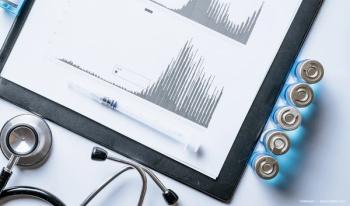
Aqueous angiography: Moving toward individualized IOP control
Aqueous angiography facilitates increased understanding of aqueous humor outflow that can provide individualized treatment for IOP control.
Reviewed by Alex Huang, MD, PhD
An important step forward in ophthalmic technologies has been taken in the potential ability to better control and predict intraocular pressure (IOP) lowering in minimally invasive trabecular bypass/ablation procedures for glaucoma. Aqueous angiography, which visualizes the anterior segment, provides images that facilitate an increased understanding of aqueous humor outflow in individual patients.
The technology was used previously to study segmental aqueous humor outflow in enucleated eyes as well as in whole eyes of non-human primates. Now, however, surgeons are able to do the same in human patients, according to Alex Huang, MD, PhD.
Study details
Dr. Huang and colleagues obtained these images in eight patients (four men, four women) who ranged in age from 54 to 77 years and were undergoing phacoemulsification. The investigators used indocyanine green (ICG) as an anterior chamber tracer for aqueous angiographic imaging.
The tracer also simultaneously served as a capsular stain to facilitate the phacoemulsification, explained Dr. Huang, assistant professor of ophthalmology, Doheny Eye Center of Pasadena, Doheny and Stein Eye Institutes, David Geffen School of Medicine, University of California, Los Angeles.
In a report published in Ophthalmology (2017;Apr 28. pii: S0161-6420(17)30949-1. doi: 10.1016/j.ophtha.2017.03.058. [Epub ahead of print]), Dr. Huang explained that a 1-mm side port paracentesis was created in right eyes in a superotemporal position and in left eyes inferotemporally, and an anterior chamber maintainer was inserted through the paracentesis.
A syringe was used to evacuate aqueous humor and a tracer was added. After imaging was completed, the anterior chamber maintainer was removed, the tracer was irrigated, and lidocaine and viscoelastic were used before the phacoemulsification procedure began.
The creation of additional wounds beyond that of standard phacoemulsification was avoided because tracer exchange occurred through the anterior chamber maintainer, which was converted into the second instrument port.
An imaging device platform (Spectralis HRA + OCT Flex module, Heidelberg Engineering) was used to image the tracer movement.
The camera head of the instrument was positioned over the eye, and a 55-degree lens was used to obtain confocal scanning laser ophthalmoscopic infrared (cSLO-IR) or angiographic images and an anterior segment lens used if optical coherence tomography (OCT) imaging was simultaneously done, he noted.
The surgeons obtained fluorescent images in the ICG capture mode to establish the preinjection background. After the ICG was injected, fluorescent images, cSLO-IR images, or videos were obtained with the patients instructed to look in different directions.
“Similar to postmortem eyes and living eyes from non-human primates, aqueous angiography in living human subjects undergoing phacoemulsification showed segmental patterns,” Dr. Huang reported. “The initial angiographic signal was seen by 40.5 ± 9.4 seconds with a range from 18 to 70 seconds in the eight subjects. In all cases, the nasal signal was the strongest.”
Novel findings
In some cases, the investigators saw pulsatile angiographic aqueous flow. Also, as a novel finding, if images were obtained one location over a longer period of time, they could observe dynamic changes. In areas in which there was no initial angiographic signal, a signal sometimes developed and vice versa, i.e., in areas in which there was a signal initially the signal intensity could be lost.
The results obtained by aqueous angiography were compatible with the findings on anterior-segment OCT and cSLO-IR, validating the signal as representing aqueous humor outflow.
The investigators pointed that the study had some limitations in that the anesthesia could have influenced aqueous humor outflow, the pupillary dilation resulted in changes in the trabecular meshwork as the result of the parasympathetic blockade, and the required use of a lid speculum might have affected the ocular surface pressure.
The investigators plan to test the use of fluorescein in addition to ICG in the future as well as study the cause of pulsatile flow, such as the cardiac cycle, and quantify the dynamic changes.
“Aqueous angiography is possible in eyes of living human subjects and compatible with successful phacoemulsification without surgical complications,” Dr. Huang concluded. “Segmental aqueous outflow was observed as in the enucleated eyes and the living eyes of hon-human primates. Real-time aqueous humor outflow may improve basic knowledge of outflow biology as well as potentially guide glaucoma therapeutics.”
Alex Huang, MD, PhD
Dr. Huang receives research support from Glaukos Corp. and Heidelberg Engineering.
Newsletter
Don’t miss out—get Ophthalmology Times updates on the latest clinical advancements and expert interviews, straight to your inbox.















































.png)


